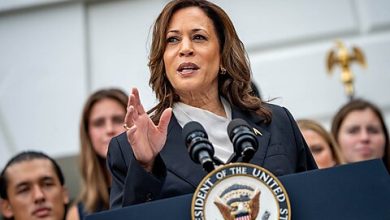FCC’s New All-In Pricing Rule for Cable and Satellite

Sophia Bagley and Ryan Bourne
In the Biden administration’s latest effort to combat “junk fees,” the Federal Communications Commission (FCC) voted March 14 to mandate “all‐in pricing” for broadband and direct broadcast satellite (DBS) providers.
Under the new rule, cable and DBS providers must display a single line, all‐in price for their services in consumers’ bills and on advertising materials that state a price. The FCC thinks this will stop consumers from being surprised by unexpected fees passed onto them, such as the mandatory “broadcast TV fee, or regional sports programming surcharge.”
Making sure these fees are represented in an upfront total price will “allow consumers to comparison shop,” the FCC says, without being misled to think these charges are government‐imposed.
Who could oppose revealing the total price of a video programming service upfront? Compared to other “junk fee” regulations that control prices (credit card late fees) or make all customers pay to provide services to others (banning airlines from charging parents on basic economy tickets for guaranteeing seats with their children), this regulation might seem like a fuss about nothing.
Firms can still itemize bills to provide consumers granular detail, including identifying these charges, as well as “franchisee fees, public, educational, and governmental access fees…and other…charges imposed by the government,” or equipment costs. So there’s not much being lost on transparency through this bundling.
Yet even a seemingly innocuous regulation mandating all‐in advertised prices may cause confusion and actually distort competition.
Providers in this industry often engage in national advertising campaigns. Yet it would be near impossible to advertise an all‐in price nationally given the regional variation in sports network fees alone. An all‐in price would thus invariably be wrong for a large number of potential customers. So how should it be represented? Providers would have to show a dizzying range of regional prices, select the highest national price that will certainly be wrong for most customers, or just not advertise prices nationally. Would any of these options be clearer and more transparent for customers?
Furthermore, all‐in pricing could discourage the use of bundles, which benefit a wide array of consumers through discounts and increased choice. Oftentimes, cable or satellite TV is bundled together with voice services and broadband packages. This regulation mandates a stand‐alone price for video programming services when firms are advertising such a bundle by price. Not only does this mean the companies have to calculate a sub‐price where it currently doesn’t exist, but it’s likely to be incredibly confusing to customers with varying service preferences.
The rule may also distort competition, given it covers cable and DBS providers while not covering competitors like online streaming services. The FCC would say that’s because only cable and satellite companies face and pass on these mandatory fees. Yet that’s not quite true. Some sports streaming services, such as Fubo, charge regional sports fees. Fubo would thus still be free to advertise a base price excluding the fees, while cable and DBS providers would not.
These companies also often differentiate themselves through strategic offerings such as diverse channel selections and varying terms of service, often through promotional deals. They aren’t just competing on price. Direct TV points out that its entry‐level “Entertainment” package has 165 channels, for example, against DISH’s 190 channels and Xfinity’s 125 in its “Popular” package. Deals might also give customers a taste of certain premium channels for a number of months, which they are then able to cancel. Would an all‐in price regulation have to cover the cost of channels that consumers could opt out of after a set period in a contract? And if not, how would that deal be represented accurately?
Aside from these consequences, there are also concerns regarding the legal basis of this rulemaking. Many industry stakeholders, along with two FCC commissioners, assert that the FCC lacks the authority to impose price disclosure rules beyond the scope of the Television Viewer Protection Act of 2019 (TVPA). The TVPA mandates disclosures at the point of sale for video programming but does not extend to regulating pricing in advertising or delegating rulemaking power to the FCC.
Commissioner Carr adds that the FCC realizes this and attempts to call on other parts of the law to justify this rulemaking, but those too are not convincing. He concludes that “this item is yet another example of the new normal at the FCC. After three years of restraint, the Commission is now unlawfully arrogating authority over every aspect of a communications provider’s business. At this point, only the courts can put an end to this raw assertion of power.”
While an all‐in pricing rule for cable and DBS providers may sound like common sense, it serves as a prime illustration of how anti-”junk fees” regulatory measures, even those seemingly benign, could yield unintended consequences. The intricate nature of the video programming industry, combined with the obligations imposed by the rule, threatens to reduce consumer choice and foster confusion while tilting the deck towards some providers over others.
For more on the Biden administration’s crusade against “junk fees” see here and here.
To pre‐order The War on Prices: How Popular Misconceptions about Inflation, Prices, and Value Create Bad Policy click here.





